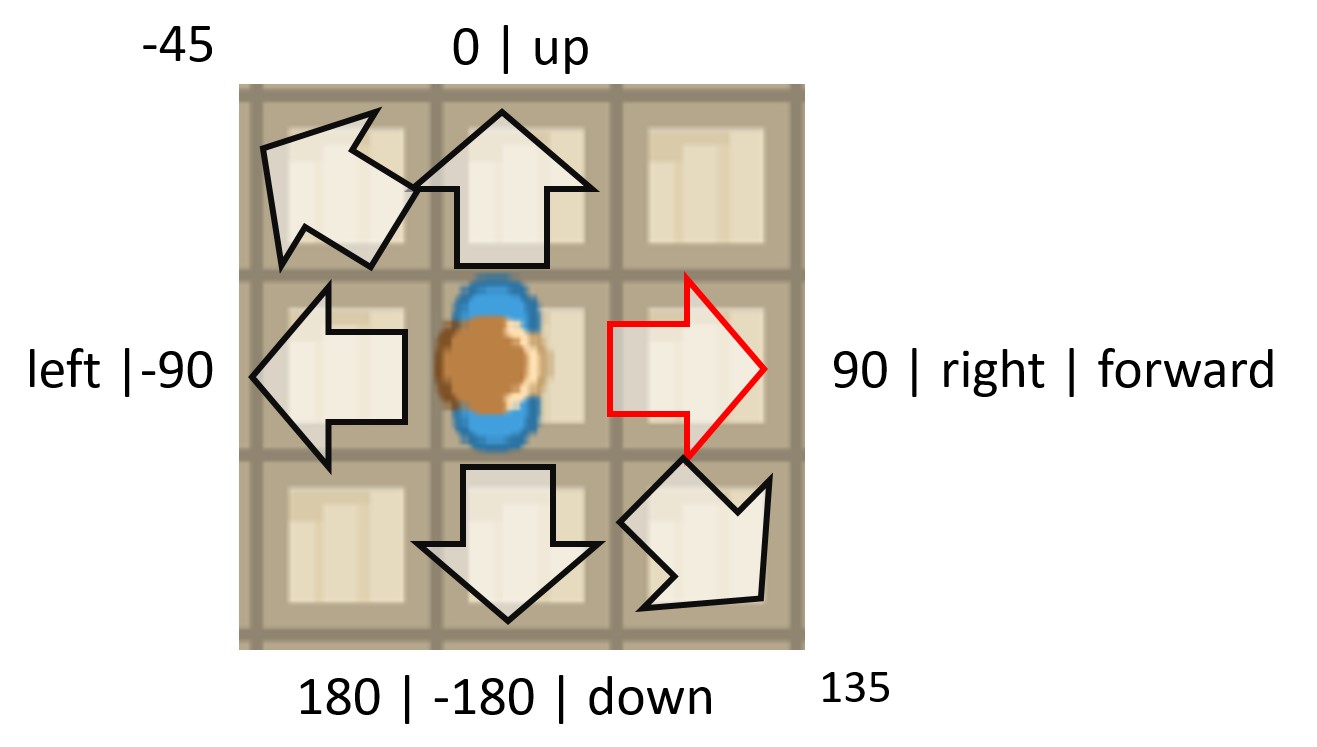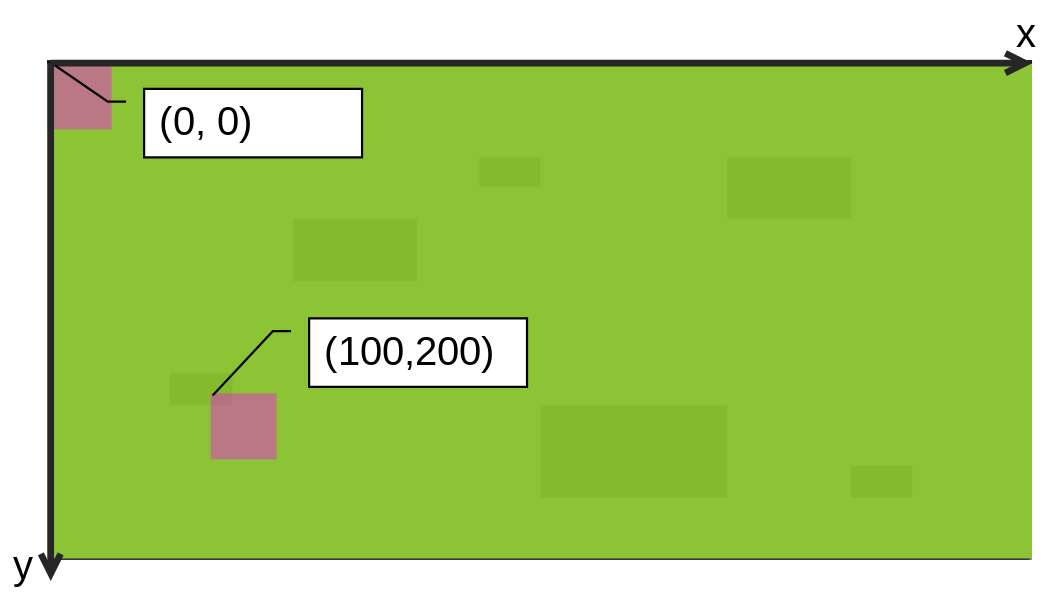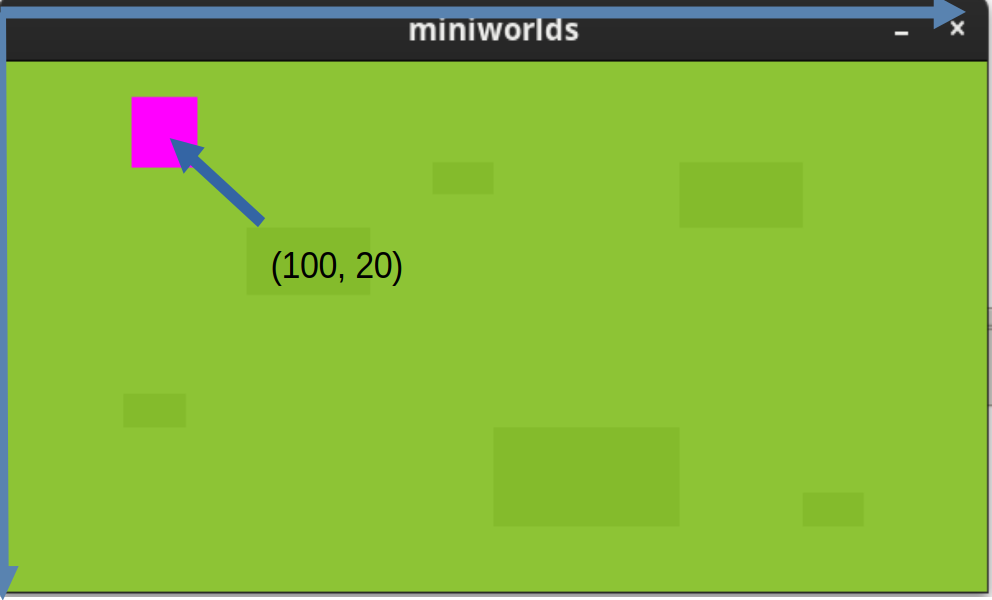Positioning and Orientation of Actors#
In this section, you’ll learn how to position and orient actors within the coordinate system.
Basics#
First, a quick recap of the core concepts:
Changing an Actor’s Position Later#
You can also adjust an actor’s position after it has been created by using the x, y, or position attributes:
my_actor.x = 120 # sets the x-coordinate to 120
my_actor.y = 90 # sets the y-coordinate to 90
my_actor.position = (120, 90) # sets position to x=120, y=90
Changing an Actor’s Direction#
An actor’s orientation can be controlled via the direction attribute.
This allows you to rotate the actor to face a specific direction:
The image below shows how the direction values are interpreted:

The meaning of direction:#
0 → up
90 → right | -90 → left
180 or -180 → down
Changing the Actor’s Origin#
You can change the origin (i.e., the point that defines the actor’s position) using the origin attribute:
a1 = Actor((0, 20))
a1.origin = "topleft" # sets the origin to the top-left corner

(0|20) now refers to the top-left corner of the actor.#
You can also set the center or top-left corner of an actor explicitly:
a1 = miniworlds.Actor((0, 20))
a1.topleft = (20, 30) # sets the actor’s top-left corner to (20, 30)
a1.center = (20, 30) # sets the actor’s center to (20, 30)
